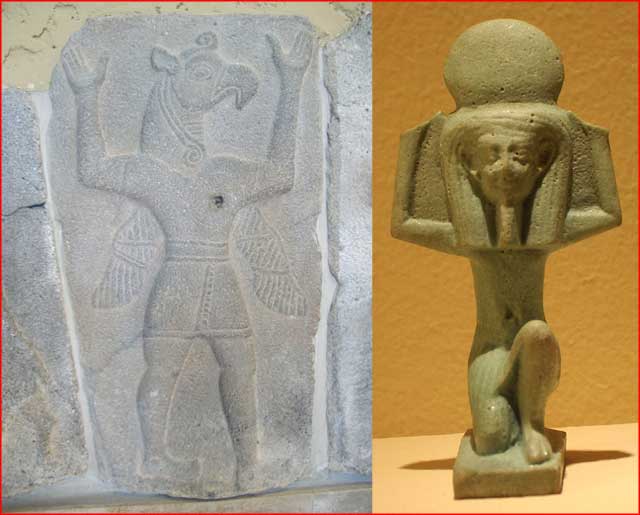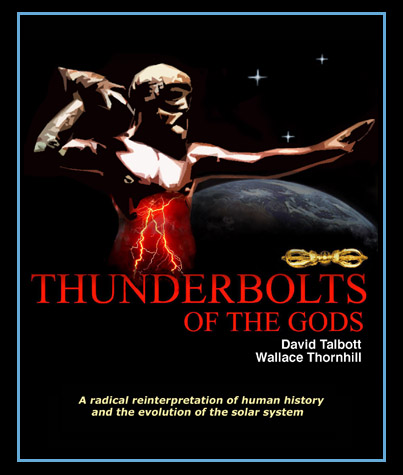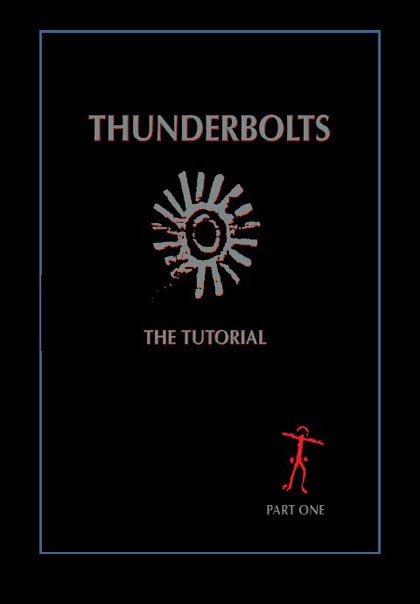
home •
about •
essential guide •
picture of the day •
thunderblogs •
news •
multimedia •
predictions •
products •
get involved •
contact

Credit: Rens van der Sluijs
pic of the day
archive
subject index
abstract
archive
Links:
Society for
Interdisciplinary
Studies

Thunderbolts of the Gods is a
108 page 8-1/2 x 11 full color monograph based on the life work of the two
authors--a revolutionary synthesis of comparative mythology and the
newly-discovered "Electric Universe".

The Monograph includes
an hour-long DVD introducing various aspects of the Electric
Universe explained by members of the Thunderbolts Group.
Nov 25, 2005
Bearing the Unbearable
The myth of a giant supporting the sky appears in many cultures around the world. It is extensively connected with the theme of the polar column. Two possible naturalistic explanations involve enhanced plasma activity in the vicinity of the ancient Earth.
Familiar though the Greek myth of Atlas may be, one looks in vain for an obvious prototype in the natural world. In itself it appears reasonable enough that some natural phenomenon inspired the image of a sky-scraping giant holding up the firmament on his arms, but it seems hardly possible that mountain chains such as the Atlas mountains on the Moroccan coast have inspired the theme.
The mystery is compounded by the profusion of similar sky-bearing characters in other mythologies. The one shown on the left, above, is an anonymous Anatolian example from Zincirli, on display in the Pergamon Museum in Berlin; on the right one sees the Egyptian god Shu, whom the Pyramid Texts, followed by the Coffin Texts, praise as the one “whose arms which are under the sky are upraised.”
Further afield, one encounters the Chinese giant Pan Gu, the Vedic first man Purusha or Indra, the Polynesian Tāne and Maui, and the Aztec culture hero Quetzalcoatl, all of whom are portrayed as anthropomorph gods of tall stature that hold the sky aloft. The recurrence of the theme cries out for an explanation other than an obsolete Freudian phallus symbol or an exaggerated impression of some local landscape feature.
The key to the mystery is that the cosmic giant is a symbolic variation on the theme of the world axis. Deities like Atlas and his congeners fluctuated between humanoid and mountainous shapes, were repeatedly associated with some "navel" or "centre" of the world, featured in the cosmogonic story of the separation of heaven and earth, and were often endowed with a luminous quality, appearing as a lofty, blazing column identified as the first light in the created world. The convergence of such motifs, which can be demonstrated in excessive detail, forcefully suggests that the heaven-carrying man requires the same explanation as the symbolism of the world axis in general, including universal trees, sky-reaching mountains, and ropes linking the extremities of the cosmos.
The plasma model offers an elegant explanation for the bewildering variety of such myths: an exceptionally intense, sustained auroral pillar observed during a prolonged geomagnetic storm – such as modelled now for the Neolithic-Bronze Age boundary – could account for a large number of features ascribed to "axis symbols". Alternatively, at some point in time an enhanced zodiacal light such as produced in the aftermath of cometary disintegration could equally have informed the theme of a humongous man standing at the boundary of the earth.
Contributed by Rens van der Sluijs
EXECUTIVE EDITORS:
David Talbott, Wallace Thornhill
MANAGING EDITOR:
Mel Acheson
CONTRIBUTING EDITORS: Michael Armstrong, Dwardu Cardona, Ev Cochrane,
C.J. Ransom, Don Scott, Rens van der Sluijs, Ian Tresman
WEBMASTER: Michael Armstrong
Copyright 2005: thunderbolts.info